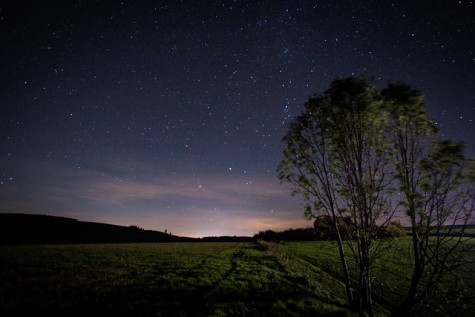Beyond the horizon
“Hello from the other side.” – Martian, born in Cydonia

Between August and October, several advances into the mysterious universe have been made.
In July, NASA’s New Horizons travelled close to Pluto and observed the dwarf planet’s composition and physical attributes. The comparatively small planet was observed to have thick solid nitrogen covering the exterior in a heart shape, and was full of volcanic activity. The New Horizon is currently monitoring other celestial objects in the Kuiper Belt – the region where Pluto is – and has moved its trajectory on Oct. 25, Oct. 28, and on Nov. 4 to continue its mission.
Moving closer to Earth, on September 28, NASA, confirmed the presence of liquid water flowing on Mars. Over the past few years, the Mars Reconnaissance Orbiter detected hydrated minerals on a dark, river-like trail that appeared during warmer temperatures (above 250 Kelvin or -23 degrees Celsius) and disappeared when the temperature was low. Formulating a theory that the substance moisturizing the minerals was liquid water, NASA eventually concluded that liquid water does exist on Mars. Mr. Griffiths, the HOD of Science and a physics teacher said: “They’ve always suspected the presence of water on Mars, but it is nice to see actual evidence that only a land module could give.” If humans can observe Mars with more accuracy, the history of that planet and the sustainability of Earth’s future may be revealed.
The discoveries have excited the Sacred Heart community, some of whom think that science-fiction is stepping closer to reality. When asked about what the information could mean to Earthlings, Hana (11), the president of the Nerd club said: “I believe that there is extraterrestrial life, and the finding just increases the likeliness of it.” Similarly, Mr. Robey, the Biology teacher, said: “The more evidence that they have for liquid water on Mars, and water in other places in the solar system, the more likely it is that there could be life somewhere else in the solar system. And in the case of Mars, that there used to be… What we can’t say though, is how likely life is to evolve where there happens to be water. We only have one example: here.”
When asked about the probability of living on Mars, Mr. Robey replied: “We should take care of the planet first before we go looking for other ones.” Mr. Griffiths held a similar view, but also commented on water being on Mars and the moon, and what it could mean to us: “It means you don’t need to carry water that far if you need it. This could affect future expeditions, like “The Martian” (a movie about a man being stranded on Mars). It also means that you can find fuel for heat engines when needed.”
Moeka (12), an AP physics student said, “It’s really nice for the public to know about outer space discoveries since we, except for astronauts, are stuck on Earth.”
As the student community buzzes about what the news could mean to their generation–and whether they will have the option to leave Earth in the future–they await further news from space.















































